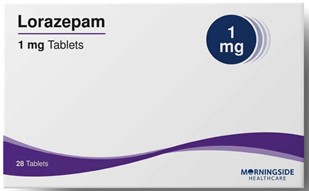Lorazepam (Ativan) is prescribed for a client experiencing severe acute anxiety. Most important teaching should include instructions to:
avoid taking opioid medications and other sedatives.
report insomnia
eat a tyramine-free diet.
adjust dose and frequency based on your anxiety level.
The Correct Answer is A
Lorazepam belongs to a class of drugs called benzodiazepines, which are central nervous system (CNS) depressants.
Taking other CNS depressants such as opioids or sedatives along with lorazepam can lead to increased sedation, respiratory depression, and other serious side effects. It is crucial for patients to avoid these medications while taking lorazepam.
Reporting insomnia is important, but it is not the most critical teaching for this medication. Eating a tyramine-free diet is not relevant to lorazepam use.
Adjusting the dose and frequency based on anxiety level is not recommended as it can lead to misuse or dependence on the medication. It is important to take lorazepam only as prescribed by a healthcare provider.

Nursing Test Bank
Naxlex Comprehensive Predictor Exams
Related Questions
Correct Answer is ["A","E"]
Explanation
a. “I can see that you feel sad about this situation”.
e. “The loss of your parent should be very painful for you.”
These responses by the nurse show empathy and validate the patient’s feelings. They also encourage the patient to continue expressing their emotions and facilitate communication.
Option b. “Don’t be sad, everyone has to pass for something like this in the life” is not a helpful response
because it minimizes the patient’s feelings and may make them feel like their emotions are not valid.
Option c. “I felt very sad when my mother died, it was horrible!” is not a helpful response because it shifts the focus of the conversation away from the patient and onto the nurse’s personal experience.
Option d. “Let’s talk about something else. this subject is upsetting you, don’t worry about this” is not a helpful response because it dismisses the patient’s emotions and may make them feel like they are not allowed to express their feelings.
Correct Answer is A
Explanation
This response acknowledges the client's interest in complementary therapies and opens up a conversation about the different types available. It also allows the nurse to provide education and information about the potential benefits and risks of complementary therapies and how they may interact with the planned treatment.
Whether you are a student looking to ace your exams or a practicing nurse seeking to enhance your expertise , our nursing education contents will empower you with the confidence and competence to make a difference in the lives of patients and become a respected leader in the healthcare field.
Visit Naxlex, invest in your future and unlock endless possibilities with our unparalleled nursing education contents today
Report Wrong Answer on the Current Question
Do you disagree with the answer? If yes, what is your expected answer? Explain.
Kindly be descriptive with the issue you are facing.
